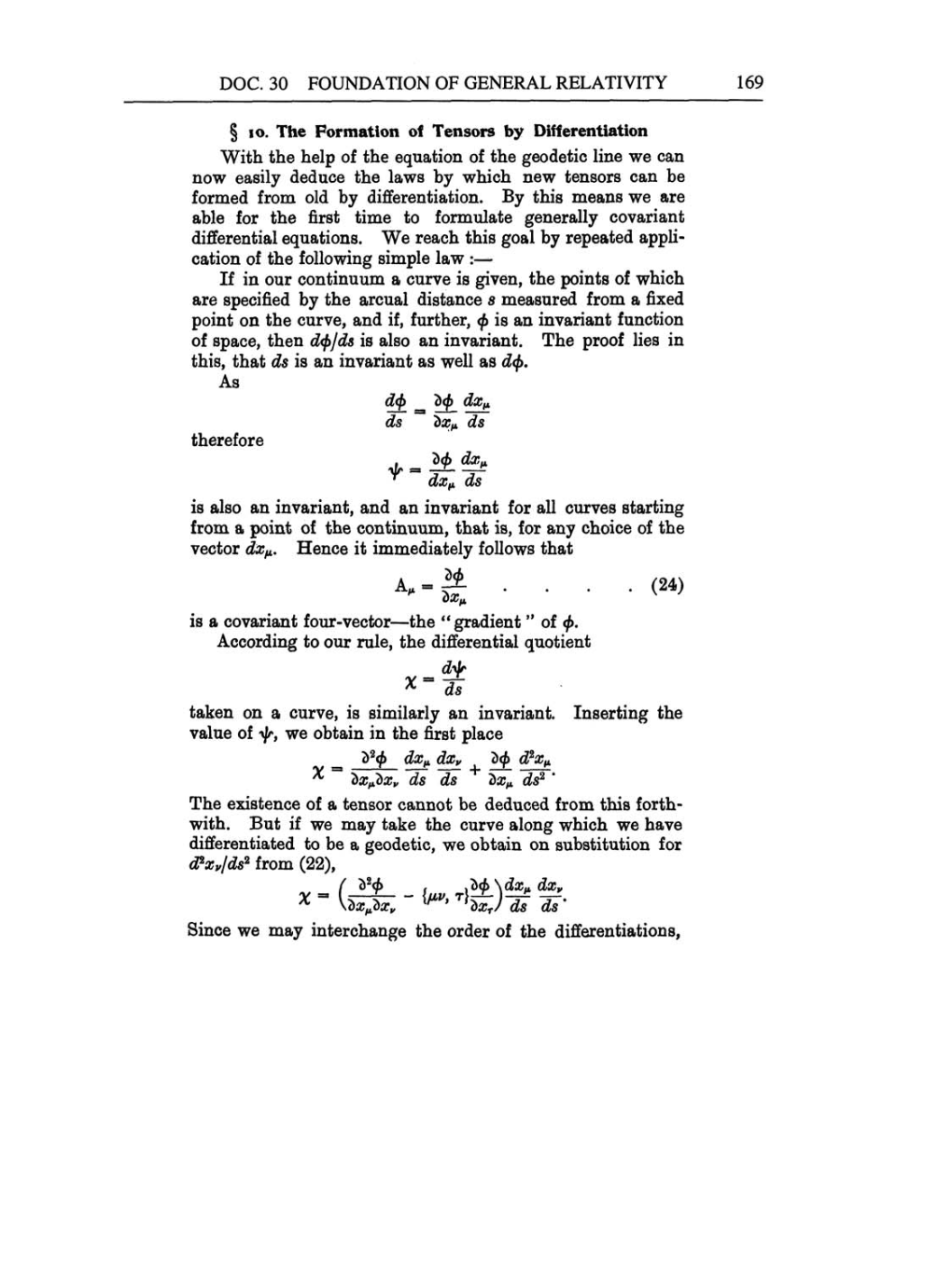DOC. 30 FOUNDATION OF
GENERAL RELATIVITY
169
§
10.
The
Formation
of
Tensors
by Differentiation
With the
help
of
the
equation
of
the
geodetic
line
we can
now
easily
deduce
the laws
by
which
new
tensors
can
be
formed
from old
by
differentiation.
By
this
means we are
able for
the
first
time
to formulate
generally
covariant
differential
equations.
We reach this
goal by
repeated
appli-
cation
of
the
following simple
law
:-
If in
our
continuum
a curve
is
given,
the
points
of
which
are
specified
by
the arcual distance
s
measured from
a
fixed
point
on
the
curve,
and
if,
further,
p
is
an
invariant
function
of
space,
then
dQ/ds
is also
an
invariant.
The
proof
lies
in
this,
that
ds is
an
invariant
as
well
as
dQ.
As
dtp
~df
dxp
ds
)Xp
ds
therefore
.
^
7)f
dx»
diCfi
ds
is also
an
invariant,
and
an
invariant for
all
curves
starting
from
a point
of the
continuum,
that
is,
for
any
choice of
the
vector
dxu.
Hence it
immediately
follows
that
. . . .
(24)
is
a
covariant
four-vector-the
"gradient"
of
f.
According
to
our
rule,
the differential
quotient
x
ds
taken
on a
curve,
is
similarly
an
invariant.
Inserting
the
value
of
yjr,
we
obtain in the first
place
d2f
dXp
dxy
deft
d2x(i
^
"bx^xy
ds ds
Dxp
ds2 '
The existence
of
a
tensor
cannot be deduced
from this forth-
with. But
if
we may
take the
curve
along
which
we
have
differentiated
to be
a
geodetic,
we
obtain
on
substitution
for
d2xv/ds2
from
(22),
V
"
(
_
Uv'
^
x
^
hxj
ds
ds'
Since
we
may interchange
the order
of
the
differentiations,
